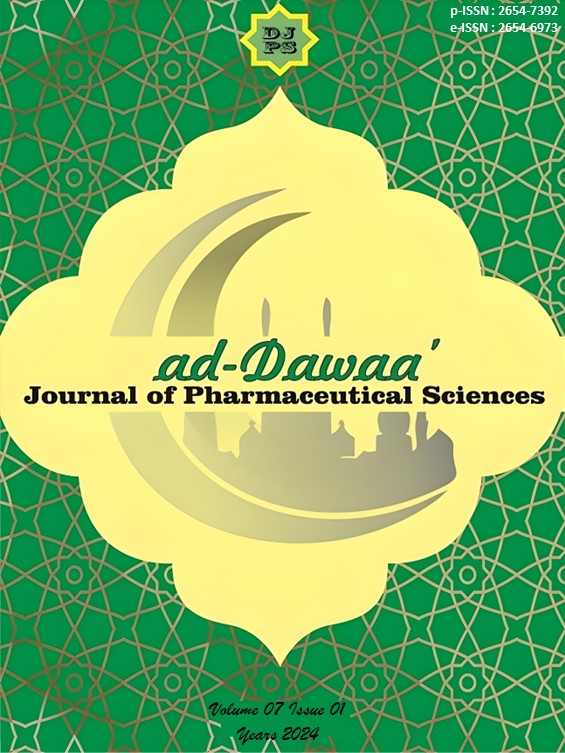Comparison of L-Ascorbic Acid Content of Red Dragon Fruit (Hylocereus lemairei (Hook.) Britton & Rose) Based on the Level Maturity
Abstract
Introdiction: Red dragon fruit (Hylocereus lemairei (Hook.) Britton & Rose) It has abundant antioxidant content that is able to suppress oxidative stress from free radicals. One of them is vitamin C (L-ascorbic acid is an important molecule in plants and animals that functions as a cofactor of various enzymes. This compound is most abundant in fruits, but the level is affected by the level of ripeness of the fruit. Aims: This study also aims to determine the difference in vitamin C levels of red dragon fruit at different levels of ripeness, namely raw, half-ripe, and ripe.. Result: The analysis used includes qualitative and quantitative using UV-Vis spectrophotometer. The qualitative analysis used three tests, treatment I used FeSO4 5% and NaOH 10%, treatment II with iodine 10%, treatment III used KMnO4 as an oxidizer. All qualitative tests on red dragon fruit from all maturity levels showed positive results with vitamin C content. while quantitative analysis of vitamin C levels showed different levels ranging from raw, half-ripe, and ripe with each value of 0.7112 mg/5g; 0.5380 mg/5g; and 0.3410 mg/5g. Conclusion: These results showed that there was a decrease in vitamin C levels with the increasing level of fruit ripeness
Downloads
References
Dwi, L., Sari, A., Surya Ningrum, R., Ramadani, A. H., & Kurniawati, E. (2021). Kadar Vitamin C Buah Tomat (Lycopersicum esculentum Mill) Tiap Fase Kematangan Berdasar Hari Setelah Tanam. Jurnal Farmasi Dan Ilmu Kefarmasian Indonesia, 8(1), 74.
Copyright (c) 2024 Faizatul Fitria, Farida Noor Arifah, Gerhana Dyeah Gusti Arni, Reza Alrayan

This work is licensed under a Creative Commons Attribution-ShareAlike 4.0 International License.
Once an article was published in the journal, the author(s) are:
- granted to the journal right licensed under Creative Commons License Attribution that allows others to share the work with an acknowledgement of the work's authorship.
- permitted to publish their work online in third parties as it can lead to wider dissemination of the work.
- continue to be the copyright owner and allow the journal to publish the article with the CC BY-SA license
- receiving a DOI (Digital Object Identifier) of the work.


1.png)